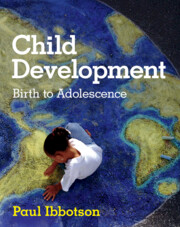Refine search
Actions for selected content:
268 results
5 - Politicizing Coal Burning
- from Part II - Political Economy
-
-
- Book:
- Stability and Politicization in Climate Governance
- Published online:
- 07 August 2025
- Print publication:
- 21 August 2025, pp 65-82
-
- Chapter
-
- You have access
- Open access
- HTML
- Export citation
The Religious Roots of Belief in Misinformation: Experimental Evidence from India
-
- Journal:
- British Journal of Political Science / Volume 55 / 2025
- Published online by Cambridge University Press:
- 18 August 2025, e109
-
- Article
-
- You have access
- Open access
- HTML
- Export citation
Restitution of colonial heritage collections: Partial norm implementation in Belgium and the United Kingdom
-
- Journal:
- Review of International Studies , First View
- Published online by Cambridge University Press:
- 15 August 2025, pp. 1-20
-
- Article
-
- You have access
- Open access
- HTML
- Export citation
4 - ‘If We Do Not Talk About These Issues Now …’
-
- Book:
- Governing the Past
- Published online:
- 30 July 2025
- Print publication:
- 07 August 2025, pp 95-123
-
- Chapter
- Export citation
2 - Orders in Transition and Implications for Political Legitimacy
- from Part I - Setting the Stage
-
- Book:
- The Law and Politics of International Legitimacy
- Published online:
- 14 July 2025
- Print publication:
- 24 July 2025, pp 24-38
-
- Chapter
- Export citation
When it is (and is not) Blameworthy to Break the Rules
-
- Journal:
- Episteme , First View
- Published online by Cambridge University Press:
- 18 July 2025, pp. 1-14
-
- Article
-
- You have access
- Open access
- HTML
- Export citation
Radical contestation: Emotional backlash and the dismantling of refugee protection
-
- Journal:
- Review of International Studies , First View
- Published online by Cambridge University Press:
- 04 July 2025, pp. 1-22
-
- Article
-
- You have access
- Open access
- HTML
- Export citation
Normative data for Vietnamese population: Effects of age, education, and sex on test performance
-
- Journal:
- Journal of the International Neuropsychological Society , First View
- Published online by Cambridge University Press:
- 03 July 2025, pp. 1-9
-
- Article
-
- You have access
- Open access
- HTML
- Export citation
Chapter 7 - Middle Childhood
- from Part II - The Growth of Meaning
-
- Book:
- The Development and Organization of Meaning
- Published online:
- 11 June 2025
- Print publication:
- 26 June 2025, pp 85-102
-
- Chapter
- Export citation

Child Development
- Birth to Adolescence
-
- Published online:
- 19 June 2025
- Print publication:
- 12 June 2025
-
- Textbook
- Export citation
2 - Why Does Love Matter?
- from Section I - The Early Years
-
- Book:
- Child Development
- Published online:
- 19 June 2025
- Print publication:
- 12 June 2025, pp 19-35
-
- Chapter
- Export citation
9 - The Relational Life of Institutional Legal Theory
-
- Book:
- Neil MacCormick
- Published online:
- 22 May 2025
- Print publication:
- 12 June 2025, pp 420-496
-
- Chapter
- Export citation
5 - How Do Children Learn So Much So Quickly?
- from Section I - The Early Years
-
- Book:
- Child Development
- Published online:
- 19 June 2025
- Print publication:
- 12 June 2025, pp 67-85
-
- Chapter
- Export citation
1 - Perspectives on Child Development
-
- Book:
- Child Development
- Published online:
- 19 June 2025
- Print publication:
- 12 June 2025, pp 1-16
-
- Chapter
- Export citation
11 - Growing Up Globally – Middle Childhood
- from Section II - Middle Childhood
-
- Book:
- Child Development
- Published online:
- 19 June 2025
- Print publication:
- 12 June 2025, pp 166-176
-
- Chapter
- Export citation
10 - Legal Constraint
- from Part I - Foundations and Theory
-
-
- Book:
- The Cambridge Handbook of Experimental Jurisprudence
- Published online:
- 17 May 2025
- Print publication:
- 05 June 2025, pp 150-170
-
- Chapter
- Export citation
29 - Who Caused It? Different Effects of Statistical and Prescriptive Abnormality on Causal Selection in Chains
- from Part III - Applications
-
-
- Book:
- The Cambridge Handbook of Experimental Jurisprudence
- Published online:
- 17 May 2025
- Print publication:
- 05 June 2025, pp 481-501
-
- Chapter
- Export citation
Chapter 2 - From Dialectology to Sociolinguistics: A Short History
-
- Book:
- English Sociolinguistics
- Published online:
- 01 May 2025
- Print publication:
- 15 May 2025, pp 20-51
-
- Chapter
- Export citation
Rethinking democracy in global network governance: norm polysemy, pluralism, and agonistic engagement
-
- Journal:
- International Theory , First View
- Published online by Cambridge University Press:
- 15 May 2025, pp. 1-30
-
- Article
-
- You have access
- Open access
- HTML
- Export citation
Obliged to hate: The successful stigmatisation of anti-war voices in Azerbaijan
-
- Journal:
- Review of International Studies / Volume 51 / Issue 3 / May 2025
- Published online by Cambridge University Press:
- 10 April 2025, pp. 431-448
- Print publication:
- May 2025
-
- Article
-
- You have access
- Open access
- HTML
- Export citation
